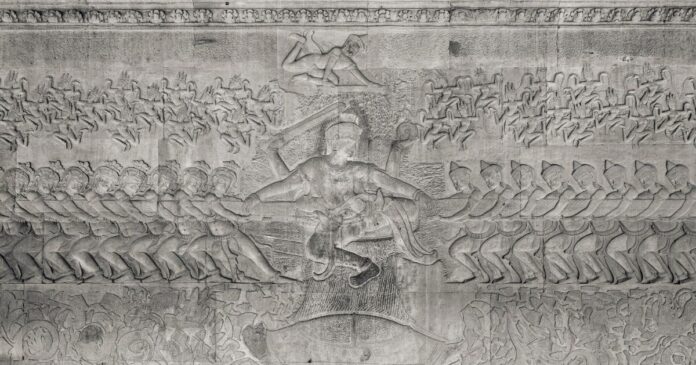In the Puranic tales of Samudra Manthan, the necessary scientific basis has been found to prove the existence of Vasuki Nag wrapped on the Mandrachal mountain. An important research by IIT Roorkee has found the remains of the backbone of a giant snake in a mine in Kutch, Gujarat. These remains are 4.7 million years old. Scientists have named the snake whose bone remains have been found as Vasuki Indicus. Scientists say the remains could be of the largest snake ever to have existed on Earth.
At the Panandhro lignite mine in Kutch, scientists have discovered 27 remains, which are parts of the snake’s vertebrae. Some of these are in the same condition as the living serpent would have been in at the time of its migration. According to scientists, if Vasuki had existed today, he would have looked like today’s big python and would not have been poisonous. The study was published in the journal Scientific Reports. “Given its size, Vasuki was a slow-moving snake that, like anacondas and pythons, would grab and kill its prey,” said Debajit Dutta, lead author of the study and a researcher at IIT Roorkee. When the temperature of the earth was much higher than today, this serpent lived in the marshy land around the coastal area. This serpent lived 6.5 -million years ago the Cenozoic Era that began after the dinosaurs ceased to exist.
The largest part of the spinal cord of Vasuki Nag has been found to be four and a half inches and according to the scientists, the roundness of the cylindrical body structure of the giant snake would have been about 17 inches. The head of the snake has not been found in this search. Researcher Debajit Dutta says that Vasuki must have been a huge creature, who after resting his head on some high place, would wrap the rest of the body around it.
Then it must have been wandering like an endless train in the marshy land. It reminds me of Ka, the giant serpent of the jungle. Vasuki was a member of the madtsoid serpent family found about 90 million years ago, which became extinct about 12,000 years ago. This species of snake spread from India to southern Eurasia and northern Africa.

